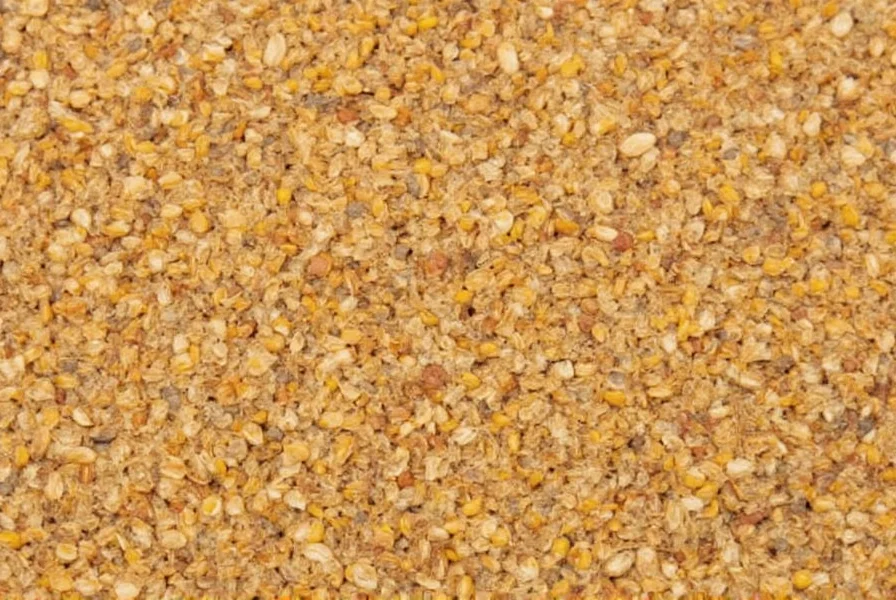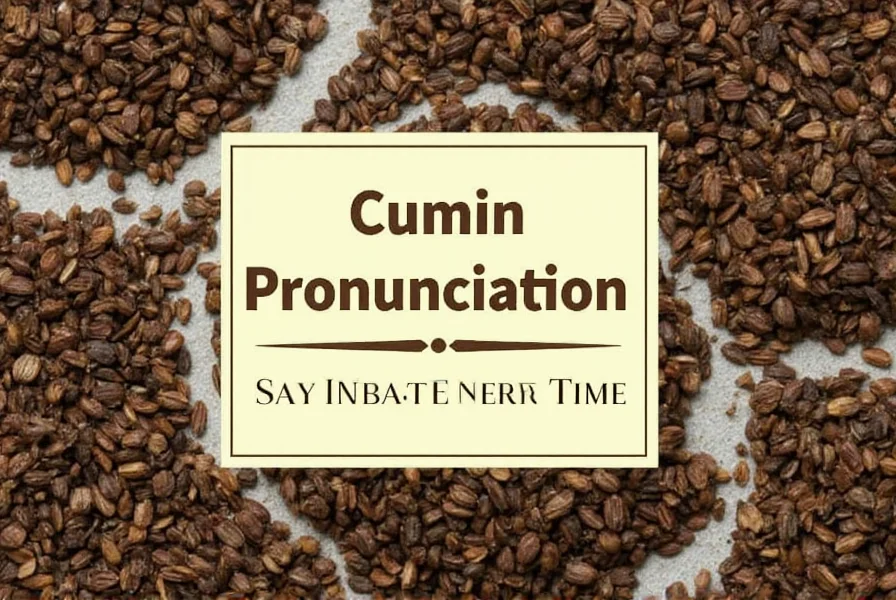Understanding cumin pronunciation correctly matters whether you're ordering at a restaurant, discussing recipes with fellow cooks, or navigating international markets. Many English speakers mistakenly say 'koo-min' or 'kyoo-min,' but the authentic pronunciation follows the word's etymological roots.
Phonetic Breakdown of Cumin Pronunciation
Let's examine the precise phonetic elements that make up the correct cumin spice pronunciation:
| Syllable | Phonetic Spelling | Sound Description | Similar Word |
|---|---|---|---|
| First | KUH | Short 'u' as in 'cut' | huh, but, cut |
| Second | min | Short 'i' as in 'in' | pin, tin, win |
The International Phonetic Alphabet (IPA) representation is /ˈkʌm.ɪn/, with the stress mark (ˈ) indicating emphasis on the initial syllable. This correct pronunciation of cumin differs from common mispronunciations that elongate the 'u' sound.
Why People Mispronounce Cumin
The confusion around how to pronounce cumin correctly stems from several factors:
- Spelling influence: The 'u' appears after a single consonant, leading some to assume a long vowel sound
- Regional variations: Some non-native English speakers apply their language's pronunciation rules
- Lack of exposure: Those who primarily encounter cumin in written recipes may never hear it spoken
- Similar words: Confusion with 'cumulus' (kyoo-muh-luhs) or 'cumin' sounding like 'human'

Etymology and Its Impact on Pronunciation
The word 'cumin' entered English through Latin cuminum and Greek kyminon, but ultimately derives from Arabic каммūн (pronounced 'kammūn'). Despite this Arabic origin, English adopted the shortened 'KUH-min' form rather than the Arabic pronunciation.
This linguistic journey explains why the cumin vs cumin seed pronunciation remains consistent—the same rules apply whether referring to the whole seeds or ground spice. The mispronunciation 'koo-min' likely emerged when English speakers encountered the word in writing without hearing its proper articulation.
Regional Pronunciation Differences
While 'KUH-min' represents the standard English pronunciation, some regional variations exist:
- American English: Consistently 'KUH-min' across most regions
- British English: Occasionally 'KUM-in' with a slightly reduced second syllable
- Caribbean English: Sometimes 'KOO-min' due to French linguistic influences
- Indian English: Often closer to the Hindi 'jeera' (jee-rah) when referring to the spice
For culinary professionals and food enthusiasts seeking accurate cumin pronunciation, the 'KUH-min' version remains universally understood in international cooking contexts.
Using Cumin Correctly in Conversation
Here are examples demonstrating proper cumin pronunciation in sentences:
- 'I added one teaspoon of KUH-min to the chili for extra warmth.'
- 'The recipe calls for toasted KUH-min seeds to garnish the finished dish.'
- 'Many Middle Eastern dishes feature KUH-min as a foundational spice.'

Mastering Culinary Terminology
Correctly pronouncing cumin pronunciation guide terms builds credibility in culinary settings. When discussing spice blends like garam masala or curry powder that contain cumin, using the proper pronunciation shows attention to detail. This applies equally whether you're a home cook, professional chef, or food writer.
Remember that language evolves, but in professional culinary contexts, 'KUH-min' remains the accepted standard. If you hear someone say 'koo-min,' now you'll understand they're using a common variant rather than the technically correct form.
Frequently Asked Questions
Is cumin pronounced 'koo-min' or 'kuh-min'?
The correct pronunciation is 'KUH-min' (rhyming with 'dumb pin'), with emphasis on the first syllable. While 'koo-min' is a common mispronunciation, culinary professionals and dictionaries recognize 'kuh-min' as standard.
Why do people say 'koo-min' instead of 'kuh-min'?
People often mispronounce cumin as 'koo-min' because the spelling suggests a long 'u' sound. When encountering the word in recipes without hearing it spoken, many assume it follows patterns like 'human' or 'humus' rather than recognizing its unique pronunciation pattern.
Does cumin pronunciation differ between American and British English?
Both American and British English primarily use 'KUH-min,' though some British speakers may slightly reduce the second syllable to 'KUM-in.' The core pronunciation remains consistent across English dialects in professional culinary contexts.
How do you pronounce cumin in Spanish-speaking countries?
In Spanish, cumin is 'comino' (coh-MEE-noh), which differs significantly from the English pronunciation. This reflects the word's journey through multiple languages before entering English vocabulary.
Is there an audio reference for correct cumin pronunciation?
Most reputable dictionaries provide audio pronunciation guides. The Merriam-Webster and Oxford English Dictionary both feature recordings of 'KUH-min' as the standard pronunciation, confirming the short 'u' sound in the first syllable.










 浙公网安备
33010002000092号
浙公网安备
33010002000092号 浙B2-20120091-4
浙B2-20120091-4